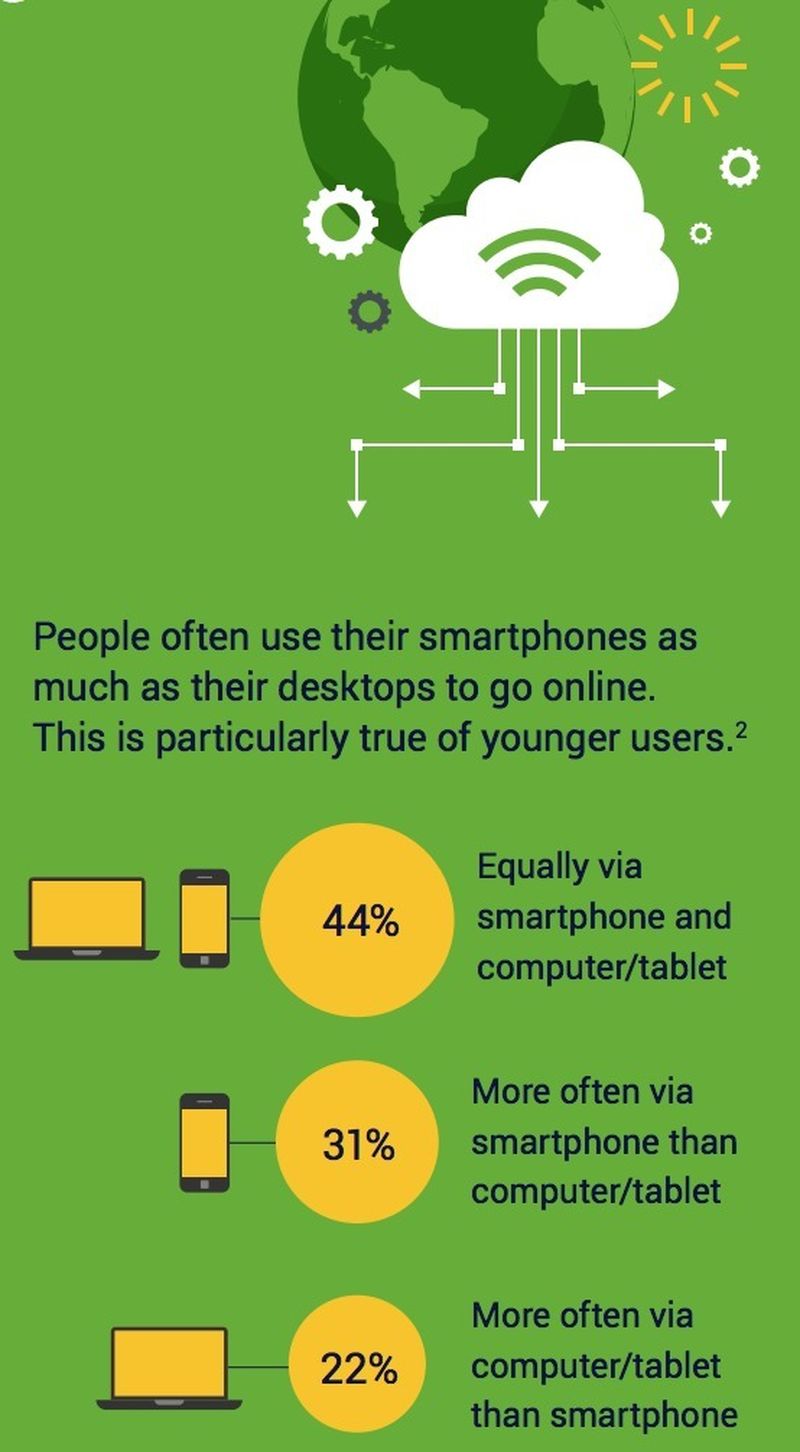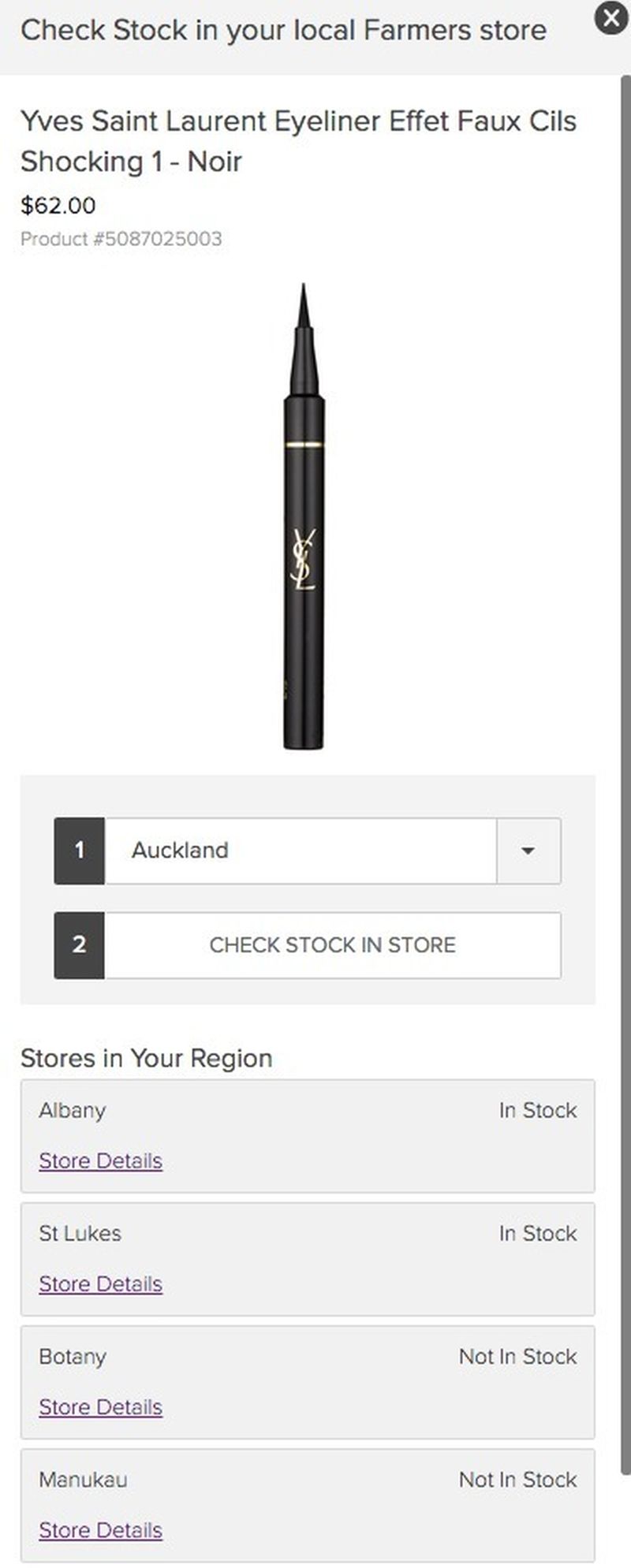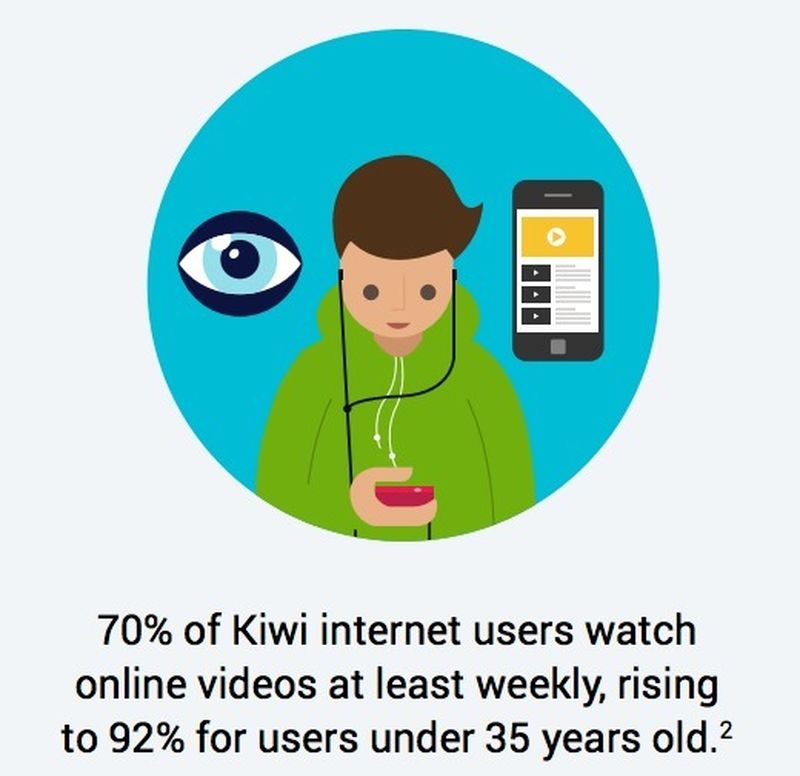Through the use of Google’s Consumer Barometer tool, Google has published data on the online behaviourisms of the New Zealand consumer. Though none of Google’s findings is breaking news, what’s important for retailers is not the data itself, but how to respond to the data. The purpose of the data is to build a greater understanding of the NZ consumer.

Buying Intent vs Persona Development
When taking in all of this information it's important to keep in mind the wise words of Lucas Watson, VP of Global Brand Solutions from Google....
Intent trumps identity every time
Retailers need to worry less about a consumer's demographic make-up and/or their personal circumstances and focus more on how they behave when they have a need to be fulfilled. The ubiquity of content and devices to access this content makes it difficult to predict buying patterns from fixed personas.
While it may help marketing teams to know Suzie is a mum of 3 and likes to watch Oprah, when she wants to purchase something for herself or her family, the journeys she will take will be different each time. Even if Suzie is purchasing the same product a second or third time.
What does this mean to retailers? Instead of figuring out how and when Suzie is going to buy eyeliner, think about how women will be looking for eyeliner when they need it (intent)and understand how they behave once this intent is triggered.
This way of thinking becomes the foundation thinking for your customer experience design.
Kiwis use their smartphone as much as desktop
Of all the mobile phones currently in use in New Zealand, 88% are smartphones. This powerful indicator of the connected NZ consumer translates to big opportunities for retailers. If retailers were to analyse their cross device data in their own analytics this finding would come as no surprise.

As the graphic above illustrates, the desktop is now being left behind as the once dominant device of choice. The takeaway from this insight is also nothing new to retailers, improve the retail smartphone experience.
Caution: Improving the smartphone experience is not simply building a responsive website, far from it.
Before leaping into designing for specific screens retailers need to take a step back from touchpoints and construct end to end consumer experiences they want to deliver. Retailers need to ask themselves questions such as, "how can I build a great experience for women looking for eyeliner products?"
Only once the consumer journeys are thought through can the retailer then go back to the touchpoints and apply the journeys across each. It is at this stage the process will consider contextual relevance for each touchpoint ("touchpoints" can be devices and bricks and mortar stores). How do eyeliner buying and information gathering journeys differ across devices and in store?
Read more about the process of constructing a customer experience journey across touchpoints.
The internet is now a key part of the NZ consumer buying journey
The internet was used in 53% of recent purchase journeys leading to either an online or offline purchase. The most common activities by Kiwis are gathering information on prices, promotions, and product availability. This is a good example of device contextual relevance.

This insight suggests retailers need to achieve a few things:
Looking for Prices
Looking for pricing suggests the NZ consumer could be on a competitor site or in a physical store comparing eyeliner pricing. To support this behaviour retailers need to ensure their product range is fully represented online and the pricing is accurate at all times.
Looking for Promotions and Deals
Typically, the first response of NZ consumers to relevant above the line and push notifications for a sales event is to check it out online with the most readily available device: smartphone. To support this behaviour retailers need to ensure all call to actions in their communications lead consumers directly to relevant sales event landing pages.
Coordinating inventory and pricing systems in time with marketing communications sounds easy, but its not. The CIO is a key figure in this challenge and solution.
Many times above the line communications drive consumers to a retailer’s home page. To support and accommodate this behaviour retailers need to place content (i.e. tile or banner) on the home page aligning to the promotion.
This content redirects consumers who have interest in this promotion to a section of the site dedicated to communicating the sales event and offers. Don't attempt to fully represent the offers on the home page, retailers will not do the campaign justice and creates unnecessary noise for those consumers not coming to the site for the promotion.
Read more about what content is best suited on the home page.
Looking for product availability
Many retailers are not yet fully on board with the connectivity of inventory systems and presenting product availability for their physical store locations.
As NZ consumers become busier and have less time to physically “browse”, this consumer behaviour is going to continually grow. A good example of this in action is Farmers.co.nz. Their check stock in store experience on the smartphone is very intuitive and easy to use, supporting those NZ consumers who wish to check stock before they make their way to a physical store.

Retailers who think stock availability content is a deterrent to driving foot traffic in store have got it wrong. In fact it drives foot traffic. Consumers who are hesitant in making a trip to a physical store are the ones who check stock.
A study done by Google in October 2014found a direct correlation between check stock in store behaviour and a lift in foot traffic. The study found 25% of consumers will not visit a store to avoid the risk of products not being available. This figure grows for retailers with large sales event days.
The NZ consumer shops internationally

The NZ consumer has three primary reasons as to why they shop with international retailers:
- Better product availability
- Broader ranges of products
- The perception of more appealing offers
To overcome this NZ retailers need to build their omni channel capabilities. There are many interpretations of this buzzword, the most accurate being the ability to deliver personalisation across touchpoints.
Developing infrastructure allowing retailers to recognise consumers and customise the experience based on their current buying intent across touchpoints is a true omni channel experience. This is something very few retailers have achieved in this part of the world requiring long term strategic planning and a CIO who shares this vision.
An example of this would be presenting Suzie with eyeliner products she has purchased in the past only once she enters the Eyeliner Category. By selecting this category the retailer can accurately assume her intent is to purchase this product again. Displaying eyeliner products on the home page would be too soon.
Having consumers interact with you (the retailer) across multiple touchpoints is only valuable if the consumer has a good experience across each. With international retailers, consumers only ever interact with a single touchpoint when they have the intent.
For retailers who cannot compete on the three reasons (above), personalisation is the answer.
The NZ Consumer watches online video

This NZ Consumer video consumption behaviour provides retailers the opportunity to build and enhance consumer connections when they are in early information gathering.
Google's deep understanding of consumer behaviour on Youtube has created four consumer behaviour classifications for those who watch video:
“I want to watch what I’m into” moments. This is watching video content in line with passions and interests. These are people wanting to be entertained.
“I want to know” moments. This is learning, exploring or researching behaviour. These are people who want to build their knowledge on specific topics.
“I want to do” moments. These are instruction related videos. “How to” searches on Youtube have increase 70% year on year.
“I want to buy” moments. Consumers are information gathering and using video to help them make a purchase decision.
This insight forces retailers to ask the question of where their own brand position fits within any or all of these video consuming classifications. If there is a natural synergy with one or more of these moments, creating video content to match and compliment these behaviours allows retailers to been seen as adding value. This provides strategic direction for a retailer's content creation plan.
One example of this is Sephora.com (online beauty retailer) who has a substantial library of video tutorial content. One example is a video titled "The No-Makeup Look, Makeup Tutorial" with over 1.1 million views.
See the full article here on Google's video creation strategy.
This article was as tagged as